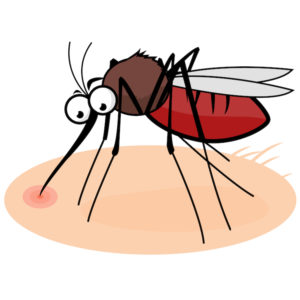Doctors’ Notes
BackBug Bites & Protection
In the spring and summer months, it’s time to think about protecting kids from insect bites. Hoping your child won’t get bitten isn’t an option; protection against insect bites is a must.
So here are some tips for your next camping trip or family adventure to the park.
1. Don’t dress your child like a flower or have her smelling like a rose.
Insects are attracted not just to standing water, but also to bright colors, perfumes, and fragrances. Avoid wearing pinks, oranges and reds. Don’t apply perfumes, scented lotions, or bubble baths before an outing, or the bugs might think your child will be very tasty!
 2. Cover what the bug sees!
2. Cover what the bug sees!
Apply insect repellent on uncovered body parts. Apply to your hands, then rub your hands on your child’s face and hands. Avoid the eyes, and reapply up to 3 times a day. (Wash skin after your child comes inside.)
3. Don’t gob it on. (More is not better!)
A light but complete coating is best. Products with 10% DEET (including brand names such as OFF, Avon Skin So Soft, and Cutter) protect for up to 3 hours. Products with picaridin, available at 7% and 15 % concentrations, need more frequent application. The higher the percentage, the more protection — though research shows that DEET products over 30% don’t offer any extra protection.
DEET is also identified as the only insect repellent to protect against bites that cause West Nile Virus.
The American Academy of Pediatrics (AAP) recommends that repellents should contain no more than 30% DEET when used on children. Do not use repellents on babies younger than 2 months of age, and use with extreme caution in older infants. If your child is younger than two months, hats, light long sleeves, and pants may provide some protection. Don’t forget to cover the feet and hands as well if you’re in a buggy area.
Some repellents just don’t work that well and aren’t worth the money, time or effort, including:
- Wristbands soaked in chemical repellents
- Garlic or vitamin B1 taken by mouth
- Ultrasonic devices that give off sound waves designed to keep insects away
Changing your environment with backyard bug zappers or candles will not keep your child from being bitten. Having bat houses around your yard may reduce your insect population but still is not a guarantee against a bug biting your child.
When walking in tall grasses and wooded areas, wear long-sleeved shirts that are tucked in, long pants, and hats to cover exposed skin. On your feet, wear boots, not sandals, and tuck pants into socks.
During your outing, routinely inspect your child and your kids clothing for ticks. Reinspect once you return home, or at the end of the day. Wearing light-colored clothing allows ticks to be spotted easily. Once discovered, ticks should be removed with tweezers immediately. Grasp the ticks near the head, close to the skin with tweezer, and pull firmly until the tick releases from the skin. Cleanse the skin with alcohol. Don’t use vasoline or matches or other methods to remove the tick; they may cause the tick to burrow deeper in the skin.
To use insect repellent safely, always read the label, follow all directions, and don’t ignore the precautions! Spray repellents in open areas so you don’t inhale the spray. Wash kids’ clothing exposed to repellent before wearing it again.
If your child has sensitive skin, apply to a small area and leave on for several hours, wash off and observe for 24-48 hours to see if any rashes or skin irritation occurs. Avoid this product if your child has a reaction to the product.
Don’t use products that combine DEET and sunscreen. It may be possible to overexpose your child to DEET, because the sunscreen needs to be reapplied often, and the DEET may make the sunscreen less effective. So use two products: DEET and sunscreen. When using both, apply sunscreen first, then repellent.
Once you come back inside, wash with soap and water to remove the repellent, and launder any clothing that has been sprayed.
Even with all these precautions, if your child is bitten by an insect, apply a cold compress to the area right away. Zyrtec or Claritin can be given to help decrease itching. It’s not unusual for the area around the bite to develop a localized reaction, usually redness surrounding the center of the bite. If swelling, redness, and tenderness persist or gets worse, call the Kids Plus office right away. Insect bites may cause an infection of the soft tissue surrounding the bite. When this happens the skin becomes reddened, is tender, and hot to the touch. Infection needs to be evaluated and if necessary, treated promptly.
As always, if you have any questions or concerns, just call our offices. We’ll be glad to offer advice or evaluate that bad bug bite!
Beverly Curtis is a former Kids Plus Provider.